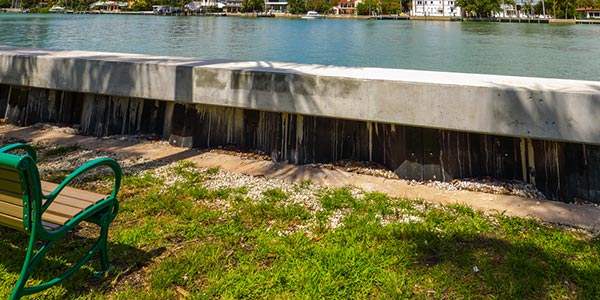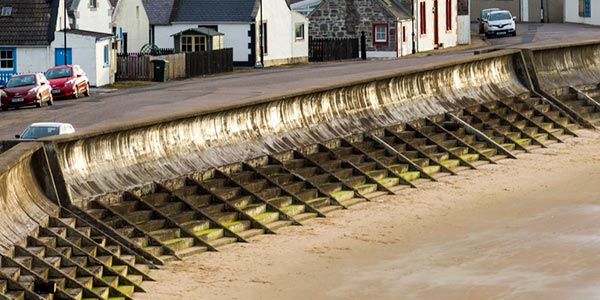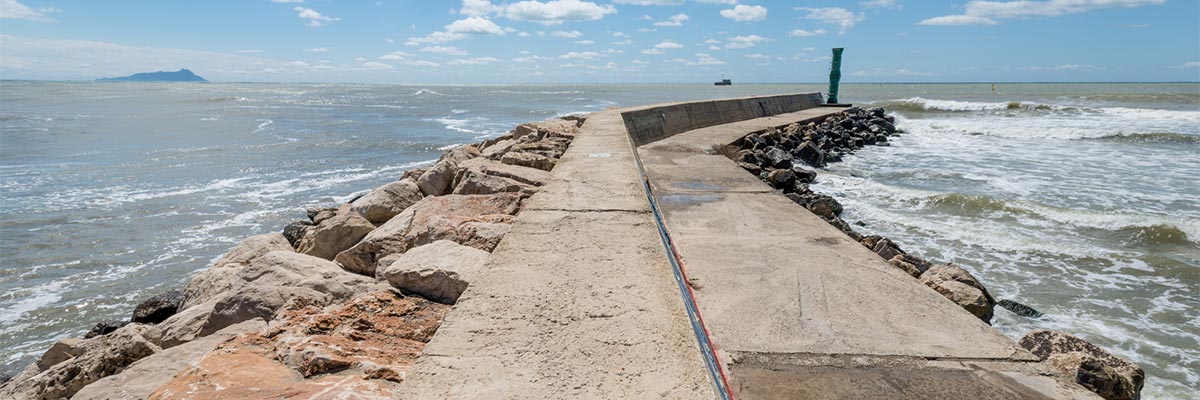Your waterfront home is an investment. Neglecting the impact that the water has on your property can have disastrous effects on the value of that property. A seawall can put that worry to rest. Seawalls are an aesthetically pleasing solution to water erosion and, if your property is coastal, can limit the power that storm surges enact to your shoreline.
To protect your shoreline is to protect your investment. Seawalls last up to 50 years and require little maintenance. If you are in the market for a seawall, give Secured Dock Builders a call.
Pick your Seawall Design

Vertical
As the name implies, vertical seawalls are constructed vertically against the shore. They are best for areas that sustain large waves crashing over long periods of time. They keep the shore from eroding, but need regular maintenance and repairs due to the beating they take from the waves.

Curved
Curved Seawalls follow the shore and are have more of a curved structure to better absorb the energy from crashing waves. The curved design enables waves to break so that the energy from the waves dissipates and is repelled back into the sea.
Vinyl or Wood?
Meet with our experts to discuss what options would work best for your location. While a wood seawall offers a more natural look at a cheaper cost, a Vinyl seawall provides greater protection from the elements and tend to have less maintenance. Keep on reading to dig a little deeper into what the two materials bring to your seawall.
Vinyl
Vinyl seawalls typically last at least 50 years. On top of the energy from wind and waves, vinyl material is impervious to sea creatures, organisms that burrow, and UV rays from the hot sun. The material won’t crack, break or deteriorate, and is easier to install reducing the time of the construction crew at your property. Choosing Vinyl is choosing a highly effective and efficient material that will require little upkeep.
Wood
Timber seawalls are lower cost, last 20-40 years, and typically involve log piles covered with wood planks and sheets. These types of seawalls are beneficial for low impact waterways including those that extend from the ocean into the mainland. Installation may be difficult on harder ground and, just like most wooden structures near water, are prone to wood rot and need to be treated and maintained. The better you treat your wooden seawall, the longer it will last.
Will My Insurance Cover Seawall Damage?

It Depends. Retaining walls are typically covered in homeowners insurance under the “other structures” section. However, each policy is different. Be sure to check the exclusion clauses to make sure that they are indeed covered. Also, you might want to check earthquake and flood damage sections for mentions about retaining walls. If you fail to maintain your seawall and it becomes worn down, cracked, or unsafe, you most likely will not be covered if it collapses as it is considered negligence.
If you don’t have any exclusions, check the fine print on your policy, and maintain your seawall properly, you should be in a good position to recoup money for any damage to your seawall.
If you still aren’t sure what material to use, our experts can go through the details of each material, pricing over the short term and long term, and help you come to the best decision for your current situation.
